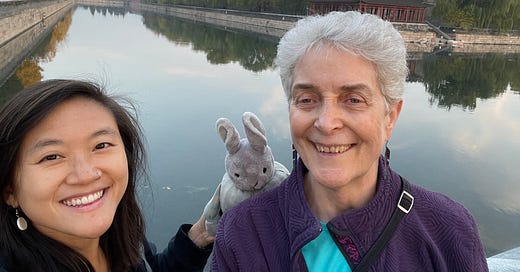We spent 4 very full days in and around Beijing. Our hotel was close to a subway stop, so Tori navigated us across Beijing and to our hotel. We had a nice hotel. They welcomed us with a fruit basket and since we hadn’t really had any fruit for days, it really hit the spot. The dragon fruit was yummy! (See Tori’s Mr. B with fruit basket below!) The first afternoon we got in too late to get tickets for some things, but we walked around the Forbidden City. We saw a lot of women dressed up in period costumes (except for the shoes) doing photo shoots in that area. It’s an enormous building as we walked around it, surrounded by a canal (moat? Lotus pond?). Then we found a restaurant for dinner, and had a salad (of iceberg lettuce) with a nice sesame dressing, really spicy pepper chicken, and beef rice noodles in chili sauce.
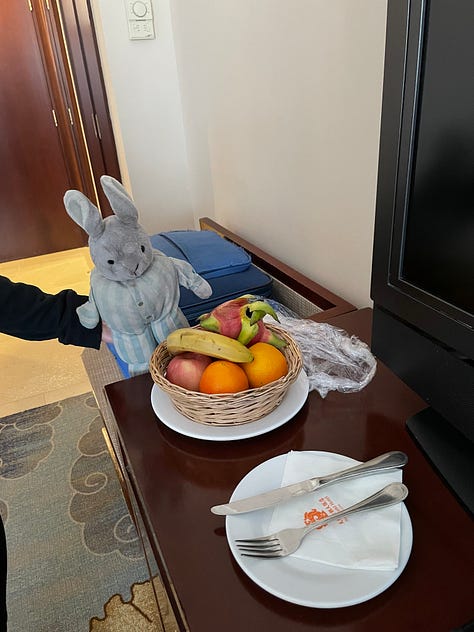
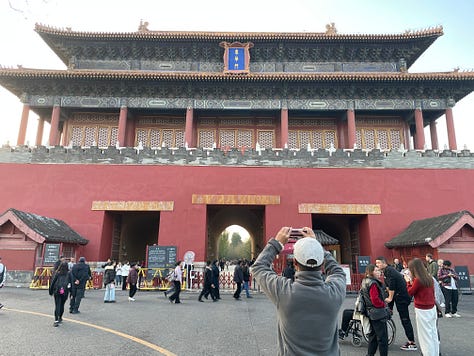
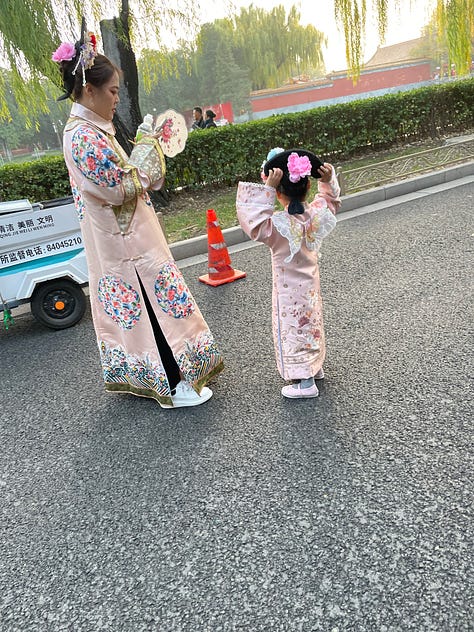
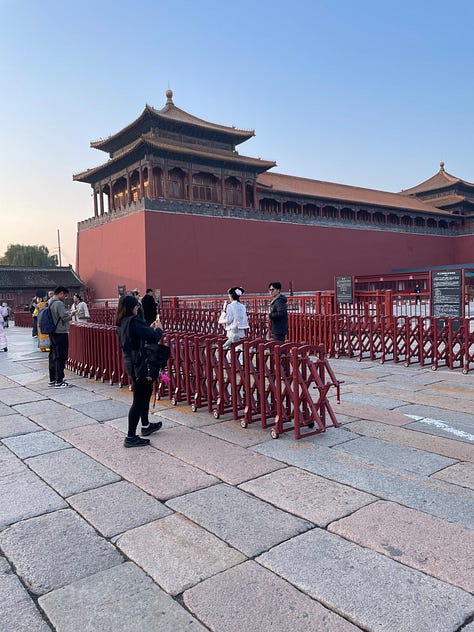
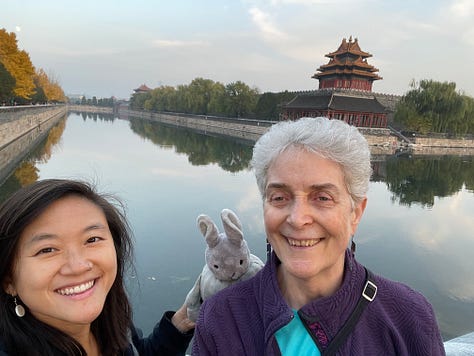

The second morning we thought we’d just walk over to Tian’anmen Square to see it on our way to Beihai Garden and Jinshan Garden. What we discovered is that Tian’anmen Square is the most thoroughly secured site in Beijing. You have make a reservation at least a day in advance, and the security just to get close enough to find that out meant that we were security checked 3 times and ID checked 5 times. So we wasted a lot of time getting nowhere and then worked our way out of the lines, and went to Beihai Garden. This is really more of a garden with a typical Chinese gate entrance. We stopped and had lunch at a restaurant inside—Chinese curry chicken with potatoes. Then while Tori did the stairs up to the Tibetan Temple while I sat and looked out on the canal through the willows. Then we went to Jinshan Park which had more former residences, and I was amused by the directions to The Divine Warehouse and The Divine Kitchen. In keeping with my theme of noticing the ordinary in the midst of the divine, I also include a picture of the Furnace, which was built in 1749. This furnace was used for burning prayer tablets and silk, not for heating the buildings. Beijing can get somewhat cold and we saw a lot of people walking around in winter coats in 50 degree Fahrenheit.
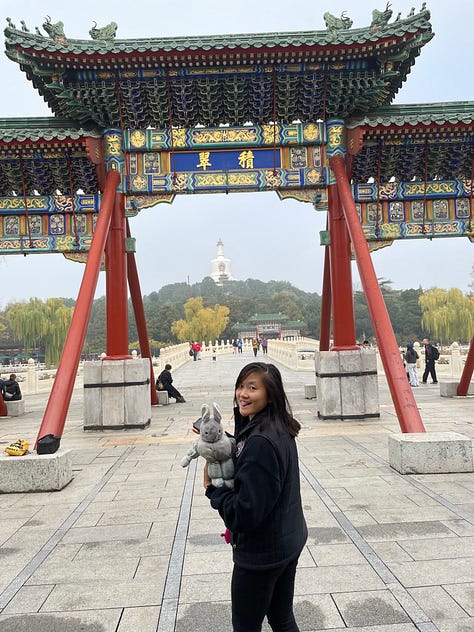
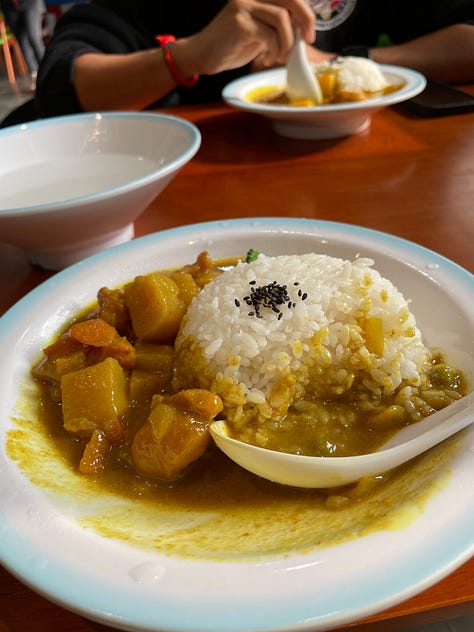

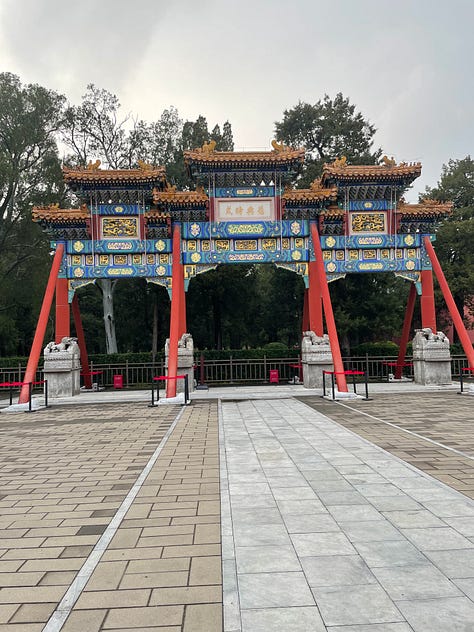
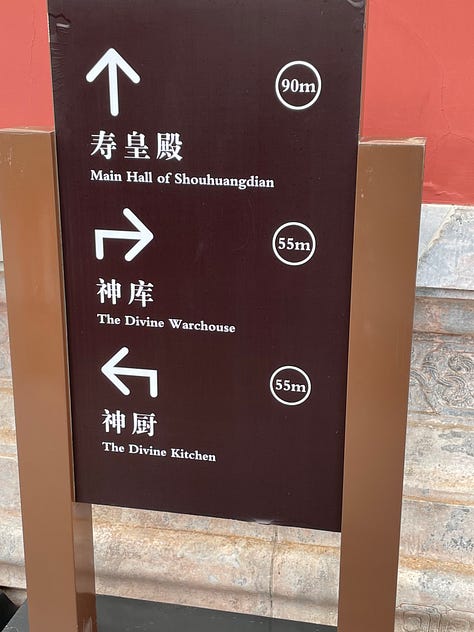

The next day (Saturday here) we went to the Great Wall. It was a different section than the one I had seen when I was here in 1995. We had booked a tour, and the bus ride to the Mutianyu Great Wall took about an hour and a half. The tour company provided lunch and made reservations for cable cars to the two different sections of the wall that were accessible. The guide suggested doing the Eastern set of towers, from 6 to 1, and then coming back down, because towers 7-13 were very similar, and then doing the Western set of towers from 14 -20 that included a 75 degree climb after tower 18 and very steep until tower 20. Tori decided she’d do the whole thing, so she went up to tower 6, walked to tower 1, and then up to tower 20, and back to tower 6 where she took the cable car down. I on the other hand went up in the cable car to tower 14, decided that I didn’t want to climb sets of 15 inch tall steps, and looked around and came back down. Tori felt very accomplished and I didn’t fall and hurt myself—win-win.
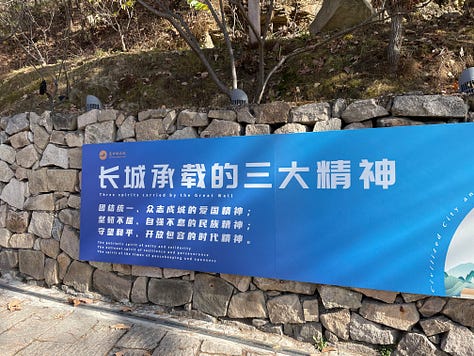
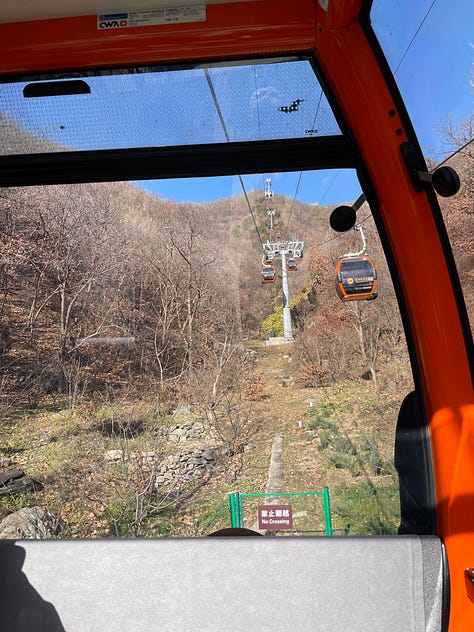
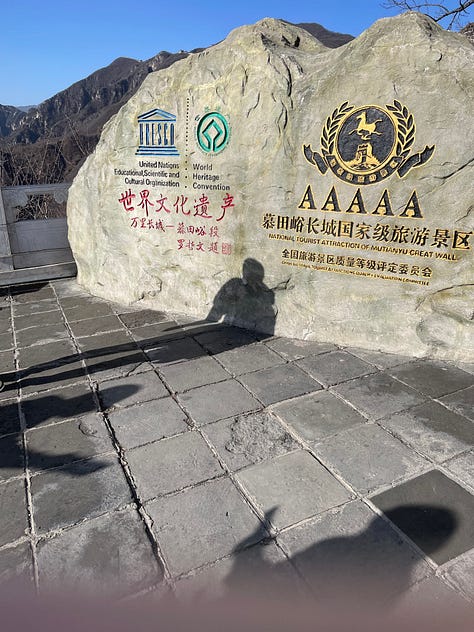
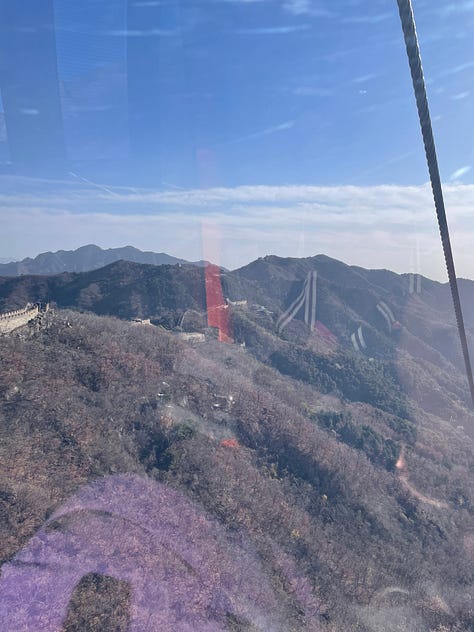
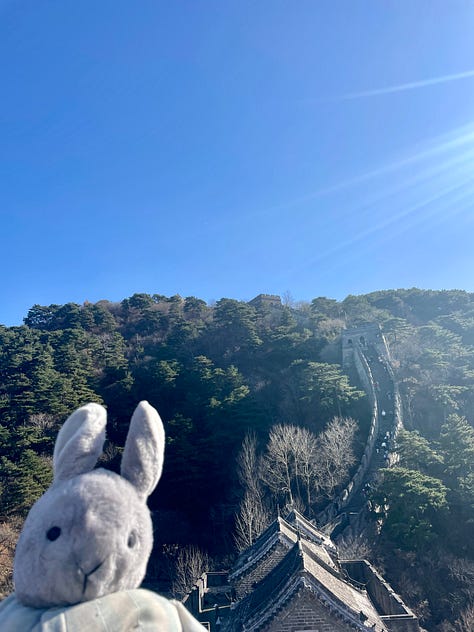
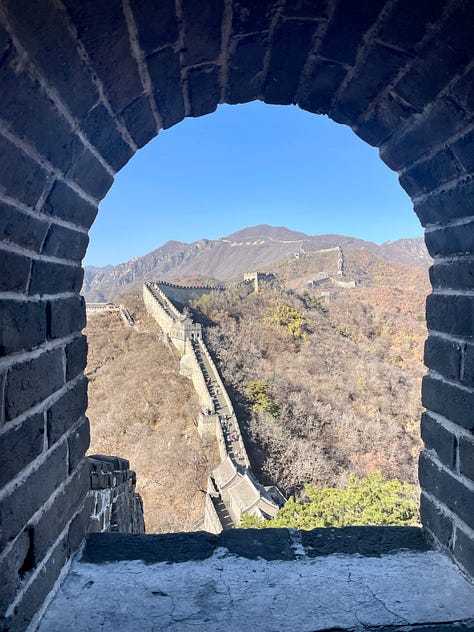
On Sunday, then, Tori having made reservations for Tian’anmen Square, we went there first. We gotten into line okay, after the usual subway screening check of our bags and persons, and then we showed our tickets twice, and our passports twice, and then we waited in line for maybe 30-45 minutes. Why? Because they were doing full individual searches of everything in our bags, and a full pat down of our coats and our bodies—as in the female (fortunately) guard figured out that I carry a tube of chapstick in my right front pants pocket. When we finally got to the Square it was another veneration of Mao and the least welcoming spot for people in the People’s Republic of China: no benches, no shade, no trees. Just some big buildings/memorials and lots of concrete. In the USA we remember the 1989 Tiananmen Square student protests and massacre. In China the only description of why the square was important was that it was the place where Chairman Mao launched the Chinese communist party in 1948. Which makes one wonder why it needs that level of security. [As a side note, I just read Robert Reich’s post about what it takes to create a police state, and why we should be alarmed at the possibility of that happening, and I can assure you, after these days in China, esp. Beijing, that none of you want to live in a police state.]
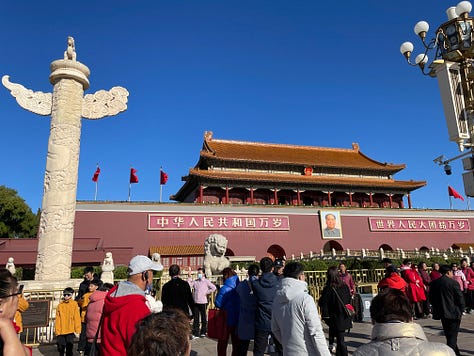
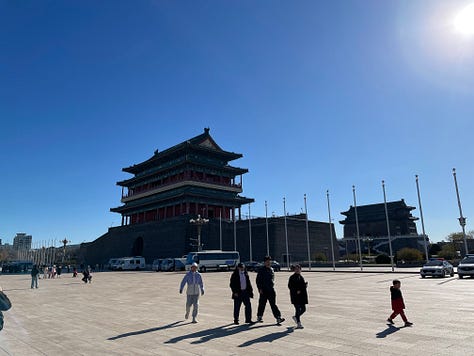
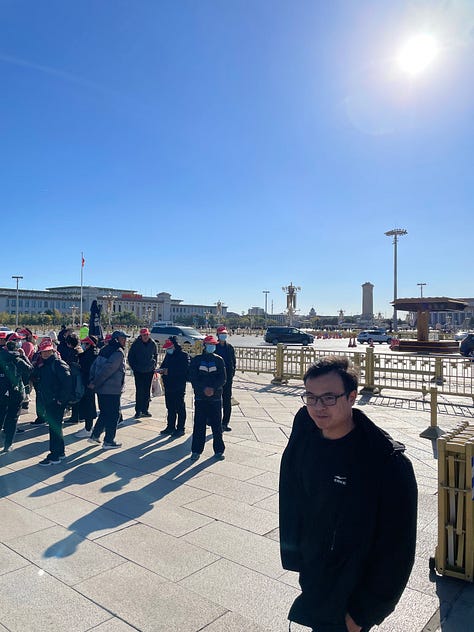
In the afternoon on Sunday we went to the Temple of Heaven and the Summer Palace. Two more opportunities for stairs that I let Tori take while I stayed on lower ground. Beijing is an enormous city (population of over 21 million in 2013) and has a love of big wide stairs at any imperial palace—I think it was to keep people off balance if they were approaching the emperor. Given how big the city is, these spaces were not really very crowded. The Temple of Heaven is where the gods spoke to the emperors, and the Summer Palace which was destroyed by the British and French in 1860 (a fact that was mentioned on most signs by most buildings there) and rebuilt in the 1980’s, was originally a place for the imperial family to get out of the city in the summer.
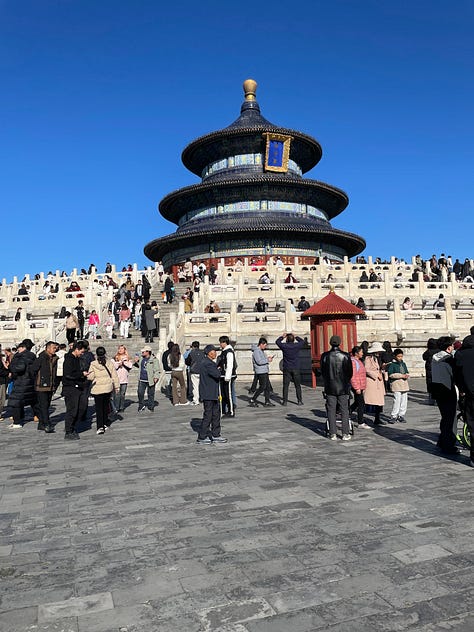
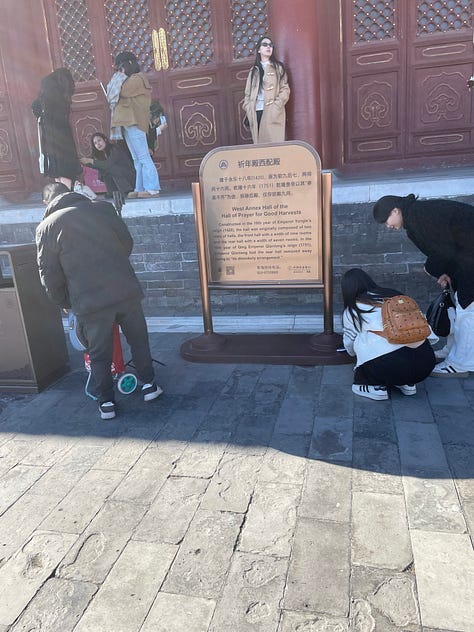
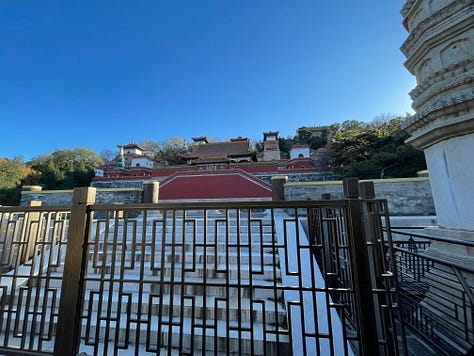
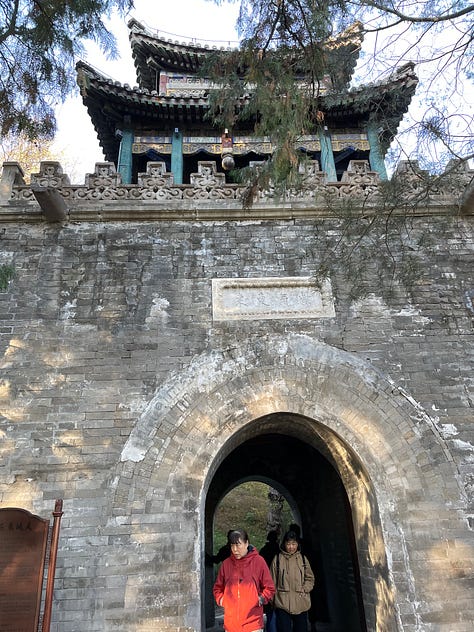
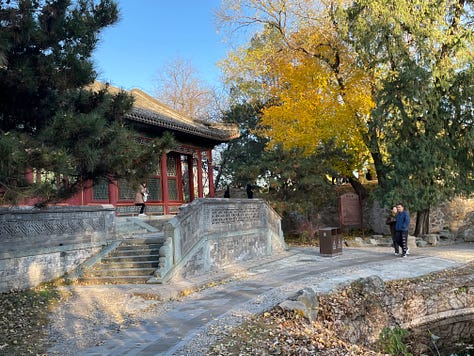
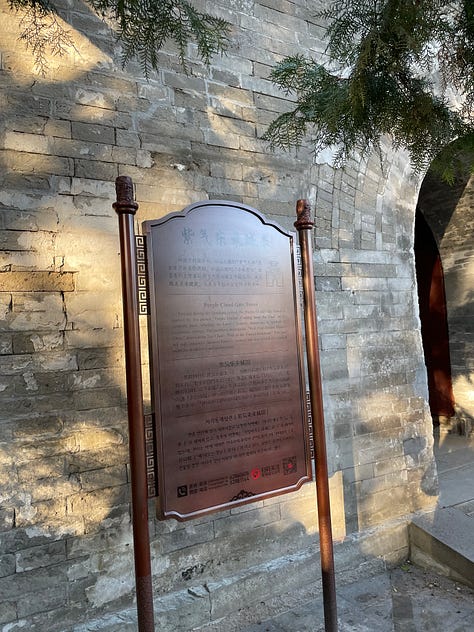
We left Beijing early this morning and I’m still processing. It’s been a lot to take in.
Reflection Questions
Why do we think walls are the answer to our fears?
What do we expect to see in palaces? (I read Luke 7:25, where Jesus is talking about John the Baptist): “What then did you go out to see? Someone dressed in soft robes? Look, those who put on fine clothing and live in luxury are in royal palaces.”
If we truly respected and welcomed our elders, our mothers with strollers, our visitors with suitcases, would we put in escalators, elevators and smooth walkways to make sure they could access all the places? What does it mean when public transportation and public places alternate stairs with some accessibility?

